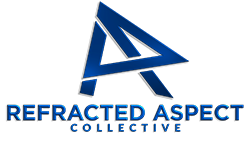
Average sales professionals do not improve on their own; without deliberate, structured development, they remain at their current performance level, limiting the growth potential of the entire sales organization.
- Active Development of Average Sales Professionals Is Non-Negotiable
- Direct Answer: Develop Your Average Sales Professionals Now or Accept Mediocrity
- Root Cause: Organizational Structures That Deprioritize Development
- Unseen Dynamics: The Hidden Costs and Cultural Blind Spots
- Lean Business Interventions: Practical Development Without Extra Overhead
- Scaling Teams: Managing Development Amid Rapid Growth
- Succession and Transition: Preserving Sales Capability Through Change
- Indicators of Progress: How to Know Development Is Working
- Frequently Asked Questions
- Reframing the Challenge of Developing Average Sales Professionals
- Partner with Refracted Aspect for Strategic Clarity
Active Development of Average Sales Professionals Is Non-Negotiable
Waiting to replace average sales performers is a costly and ineffective strategy. The only reliable path to elevating sales results is through intentional, ongoing development focused on skill enhancement, mindset shifts, and accountability. Organizations that invest in their average performers see measurable improvements in pipeline quality, conversion rates, and revenue growth. Those that do not, face stagnation and increased turnover costs.
This article provides the definitive approach to developing average sales professionals, offering clear, actionable insights that senior leaders can implement immediately to shift their sales teams from average to high-performing.
Direct Answer: Develop Your Average Sales Professionals Now or Accept Mediocrity
Developing average sales professionals requires a structured program that combines targeted coaching, measurable goals, and consistent feedback. It is not enough to hope they improve or to wait for natural attrition.
Start by identifying specific skill gaps and behavioral patterns that limit performance. Then, implement tailored development plans that address these areas with clear milestones and accountability checkpoints.
Replace the mindset of “replace if underperforming” with “develop to unlock potential.” This shift reduces costly turnover cycles and builds a stronger, more resilient sales force.
Leadership must commit resources and time to this process, embedding development into daily operations rather than treating it as an occasional initiative. This approach ensures continuous improvement and sustainable growth.
With this foundation, organizations can move beyond average and build a competitive advantage through their people.
Root Cause: Organizational Structures That Deprioritize Development
The primary reason average sales performers remain average is that organizational systems often fail to prioritize their development. This is not about individual shortcomings but about how leadership allocates attention and resources.
Many organizations focus disproportionately on top performers or new hires, leaving the majority of the sales team without clear development pathways. This creates a structural blind spot where average performers receive minimal coaching, unclear expectations, and inconsistent feedback.
Decision-making bottlenecks exacerbate this issue. When managers are overloaded or lack training themselves, they default to reactive management rather than proactive development. Incentive structures often reward short-term sales results over long-term capability building, discouraging investment in average performers.
These systemic dynamics embed a cycle where average performers plateau, and the organization accepts mediocrity as inevitable. Recognizing this pattern is the first step toward redesigning leadership priorities and operational processes to support continuous development.
Unseen Dynamics: The Hidden Costs and Cultural Blind Spots
Leaders often overlook how waiting to replace average sales professionals creates hidden costs that ripple across the business. These include lost customer relationships, inconsistent messaging, and increased pressure on top performers to compensate.
Short-term fixes like hiring replacements or pushing for quick sales wins mask deeper cultural issues. For example, a culture that tolerates average performance without clear development expectations undermines motivation and engagement.
Another blind spot is the disconnect between sales and other departments. Without alignment on development goals, marketing, product, and customer success teams may experience inconsistent handoffs, reducing overall effectiveness.
What leaders frequently miss is how these second-order effects compound over time, eroding trust and operational efficiency. Understanding these connections reframes the problem from isolated performance issues to systemic organizational health.
Lean Business Interventions: Practical Development Without Extra Overhead
For solo founders and small teams, developing average sales professionals can feel overwhelming. The key is to focus on immediate, manageable actions that fit within existing constraints.
Immediate Actions (This Week): Conduct brief one-on-one check-ins to identify specific challenges and set simple, measurable goals. Use existing communication tools to provide daily or weekly feedback.
Simple Systems: Implement a basic tracking sheet for sales activities and progress against goals. Document key sales processes and best practices in shared files accessible to the team.
Mindset Shifts: Emphasize development as a core part of daily work rather than an add-on. Encourage a culture where learning from mistakes is valued and continuous improvement is expected.
These interventions require no additional hires or software and can be integrated into current workflows, enabling sustainable development even with limited resources.
Scaling Teams: Managing Development Amid Rapid Growth
When sales teams grow quickly, development often falls behind due to stretched resources and increasing complexity. To maintain momentum, leadership must clarify communication, decision-making, and processes.
Communication Clarity: Define who needs what information and when. Establish regular check-ins and standardized reporting to keep everyone aligned.
Decision Authority: Delegate decision-making to appropriate levels to reduce bottlenecks. Empower frontline managers with clear guidelines and accountability.
Process Consistency: Standardize onboarding, coaching, and performance reviews. Use documented playbooks to ensure consistent execution across new hires and existing staff.
These interventions stabilize growth by embedding development into scalable systems, preventing average performers from slipping through the cracks as headcount increases.
Succession and Transition: Preserving Sales Capability Through Change
In founder-dependent businesses preparing for succession or sale, developing average sales professionals is critical to preserving value and operational continuity.
Knowledge Capture: Document client relationships, sales strategies, and key processes that reside with individuals. Use structured interviews and shared repositories to make this knowledge accessible.
Relationship Transition: Plan gradual handovers of client contacts and responsibilities to reduce disruption. Involve sales professionals in transition conversations to maintain trust.
Operational Independence: Build systems and training programs that reduce reliance on specific people. Develop leadership within the sales team to sustain performance post-transition.
These steps protect the business’s revenue streams and reputation while enabling smooth leadership changes.
Indicators of Progress: How to Know Development Is Working
Leaders need clear, observable signs that development efforts are improving average sales performance without relying on complex analytics.
Early Signals (30-60 Days): Increased participation in coaching sessions, more proactive communication from sales staff, and initial improvements in activity metrics like calls or meetings booked.
Progress Markers (3-6 Months): Higher conversion rates, fewer escalations or errors, and more consistent achievement of individual sales targets. Noticeable improvements in collaboration and feedback loops.
Sustainability Signs (Ongoing): Stable or improving retention of sales professionals, a culture that embraces development, and leadership regularly reviewing and adjusting development plans based on results.
Tracking these indicators through routine management activities provides practical insight into the effectiveness of development initiatives.
Frequently Asked Questions
How do I motivate average salespeople who seem complacent?
Motivation often stems from clarity and achievable goals. Start by setting specific, measurable targets that stretch their current capabilities but remain realistic. Pair this with regular, constructive feedback that highlights progress and areas for improvement. Recognize small wins publicly to build momentum. Avoid vague encouragement; instead, focus on actionable steps that connect effort to results.
What if I don’t have time to coach every average performer personally?
Leverage peer coaching and group sessions to multiply your impact. Train your top performers or managers to deliver focused coaching on key skills. Use simple tools like scorecards or dashboards to monitor progress without micromanaging. Prioritize coaching for those with the highest potential to improve and delegate routine check-ins to trusted team leads.
Is it better to replace average performers or invest in their development?
Replacing average performers is costly and disruptive. Development is almost always more efficient and sustainable. It preserves institutional knowledge and builds loyalty. However, if someone consistently fails to improve despite structured development efforts, replacement may be necessary. The key is to exhaust development options first and make replacement a last resort.
How do I measure if development efforts are actually improving sales results?
Track both activity and outcome metrics. Look for increases in qualified leads, conversion rates, and deal size. Monitor behavioral changes like responsiveness, follow-up consistency, and use of sales tools. Combine quantitative data with qualitative feedback from customers and internal stakeholders. Improvement in these areas over time indicates effective development.
What are common mistakes leaders make when trying to develop average salespeople?
Common errors include setting unrealistic expectations, providing inconsistent feedback, and neglecting to tailor development to individual needs. Another mistake is focusing solely on skills without addressing mindset or motivation. Leaders also often fail to allocate sufficient time and resources, treating development as secondary to immediate sales targets.
Reframing the Challenge of Developing Average Sales Professionals
The tension between developing average sales performers and waiting to replace them is a critical operational challenge with tangible costs. Without active development, organizations face stagnating revenue, increased turnover expenses, and weakened team morale. Progress looks like a sales force that consistently improves, adapts, and sustains growth through deliberate capability building.
This article shifts the perspective from reactive replacement to proactive development, emphasizing that average performers are a strategic asset when properly supported. Recognizing this reframes leadership priorities and unlocks new pathways for operational excellence.
Addressing this question is one part of a broader diagnostic framework necessary for comprehensive business health. Leaders who embrace this approach position their organizations to overcome friction, accelerate momentum, and build lasting competitive advantage.
Partner with Refracted Aspect for Strategic Clarity
Refracted Aspect works closely with experienced operators who have built substantial businesses and seek clarity amid complex operational and strategic challenges. Through structured diagnostics and strategic guidance, we help leaders uncover hidden patterns and prioritize what truly drives performance within their unique market and regulatory environments.
Our Health Check is a comprehensive tool designed for sophisticated businesses aiming to understand what’s working, what’s missing, and where to focus next. It respects your knowledge while providing an objective outside perspective that is often difficult to achieve internally.
If you want a practical conversation focused on strategic clarity and actionable insight, consider taking the next step and Book a Discovery Call with us. This is a peer-level dialogue aimed at helping you navigate your internal dynamics with confidence and precision.
















